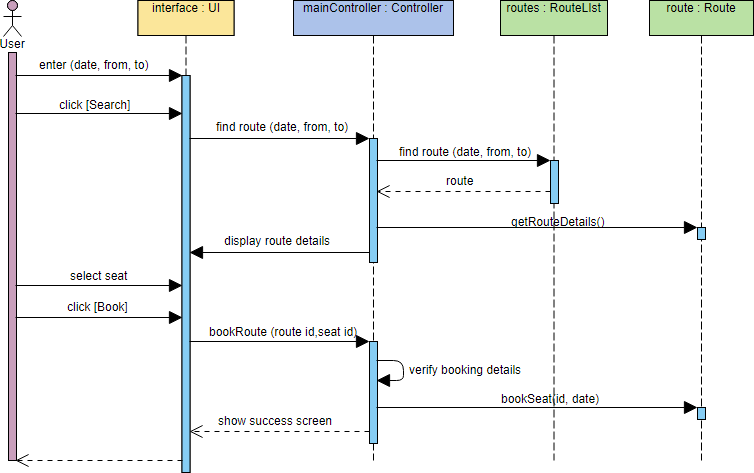
You should place the most important objects to the left and subordinate objects to the right. Next, you can place objects on the diagram that are instantiated by the UI or by other objects. This is an excellent tool for providing context for a use case. You can also place a “UI” (user interface) placeholder class on the diagram with which the actor interacts. As shown in Figure 1, it's a good idea to place the actor that initiates a particular sequence at the upper left side of the diagram. Objects that are involved in the sequence of events you are documenting should be placed at the top of the sequence diagram across its horizontal axis.
#Drawing a sequence diagram example software
Objectsįigure 1: A sequence diagram can be created for each use case in a software system

There are four primary elements of a sequence diagram:įigure 1 demonstrates the use of each of these elements in a simple sequence diagram. In this article, we'll go step-by-step through the process of building a sequence diagram for a particular use case, but first, you need to learn about the different elements of sequence diagrams. So, what kinds of things should you document in a sequence diagram? Usually, a sequence diagram is used to document the logic of a use case (for a discussion of use cases, see Component Developer Magazine, Issue 2 - 2001). You may also discover that objects you originally thought should be involved in a particular process shouldn't be involved at all! Modeling Use Cases In addition, sequence diagrams help you easily identify unnecessary messages between objects and factor them out. At a higher level, it also helps you comprehend the overall flow of a particular process. In contrast, when you document your thought process in a sequence diagram, suddenly the answers to these questions become crystal clear. These questions are very difficult to answer correctly when you simply try to envision object messaging in your head. However, once you decide to elevate your programming by using business objects in your applications, sequence diagrams help you answer two very important questions: This is because if you're not using business objects, most of your application logic resides inside methods of user interface objects or in functions and procedures?and there really isn't much messaging that occurs between objects. Why use Sequence Diagrams?Īs mentioned in the previous article on class diagrams, unless you are using business objects in your applications, you won't have much need for sequence diagrams. While the collaboration diagram's main focus is to show how objects are associated with each other, sequence diagrams show the time ordering of messages between objects. Sequence diagrams are closely related to collaboration diagrams (discussed in the next article in this series). They are most often used in the construction phase of software projects and are especially useful when analyzing the process-intensive portions of your application.
#Drawing a sequence diagram example series
This third article in the series covers one of the most interesting diagrams in the UML - the sequence diagram. You often create a sequence diagram to model the logic of a use case. Sequence diagrams can help you comprehend and solve difficult issues in the process-intensive portions of your applications. It helps you document and understand the dynamic aspects of your software system - specifically the sequence of messages that are sent and received between objects.

The Sequence Diagram is one of the most interesting and useful diagrams in the Unified Modeling Language (UML).


 0 kommentar(er)
0 kommentar(er)
